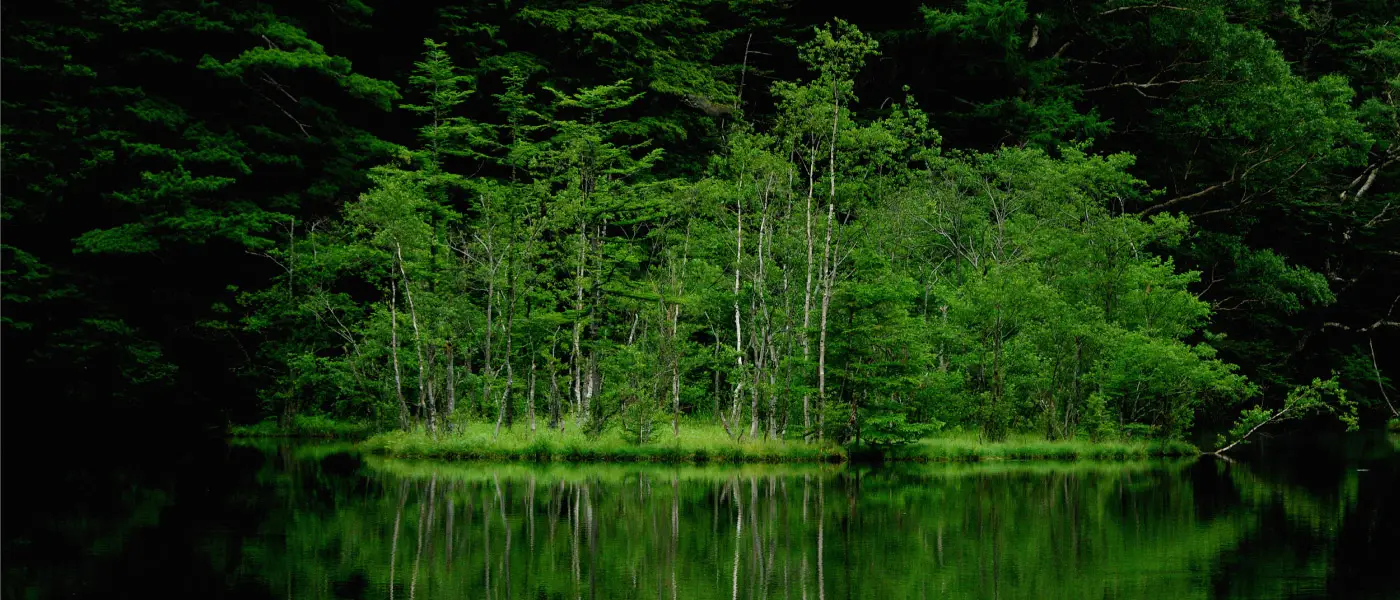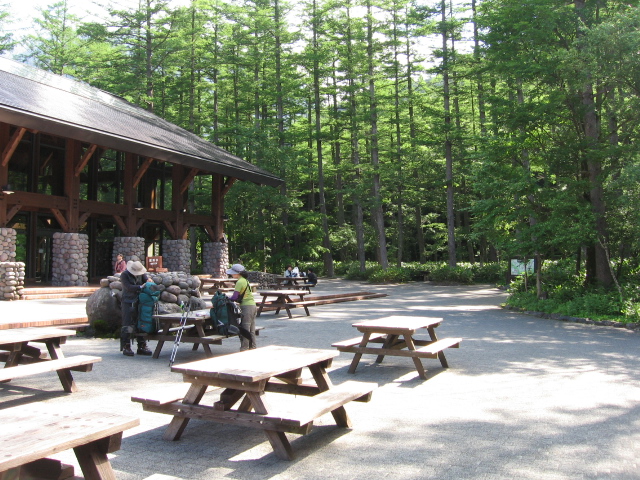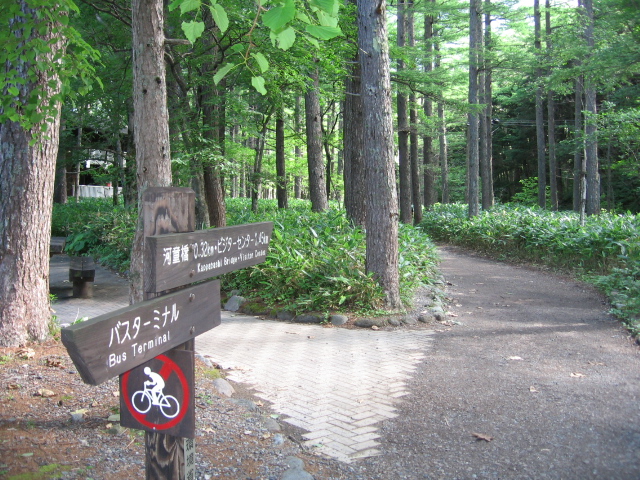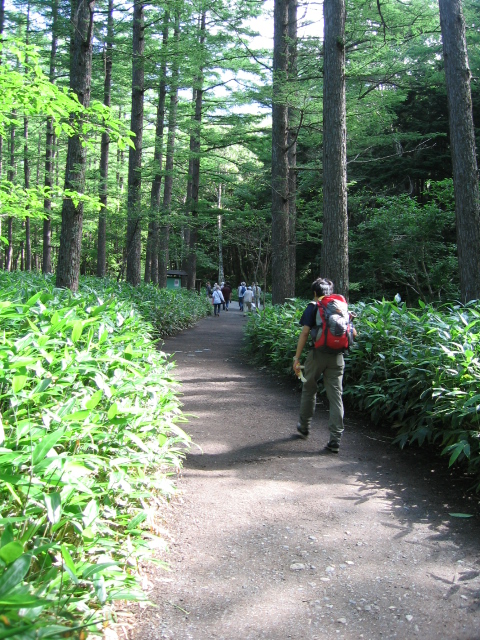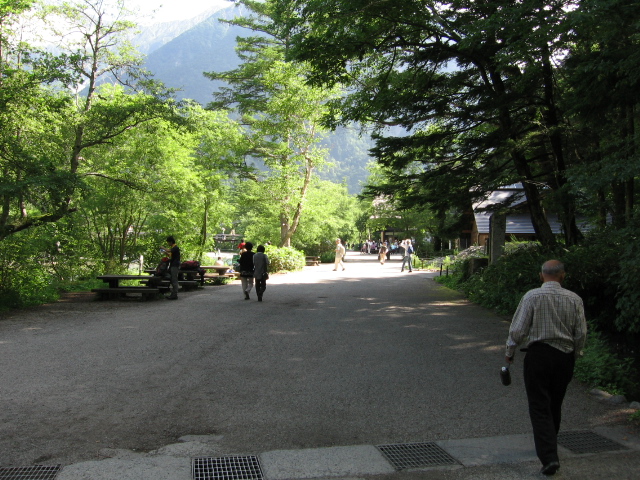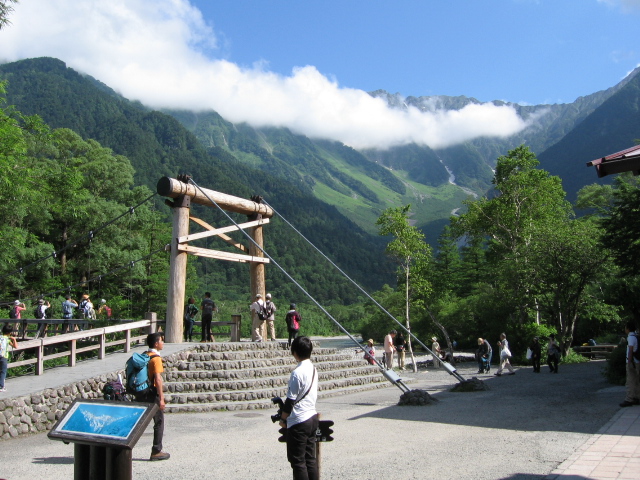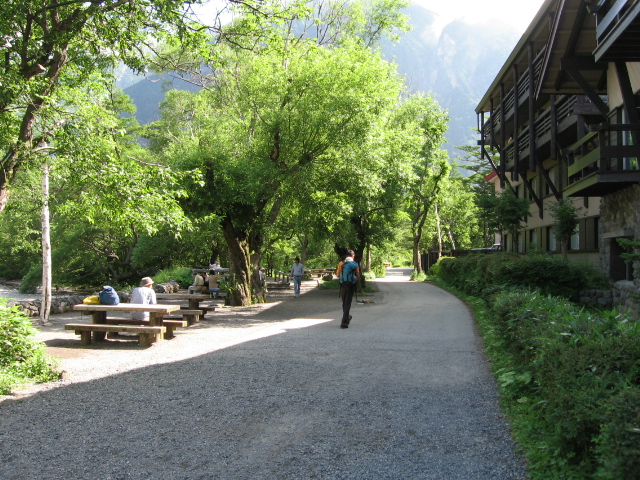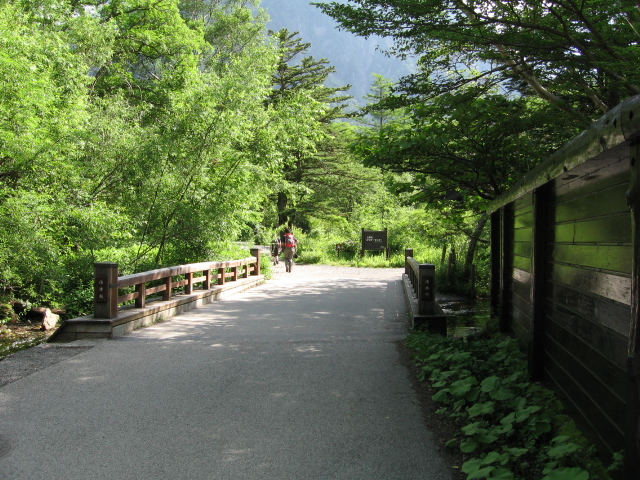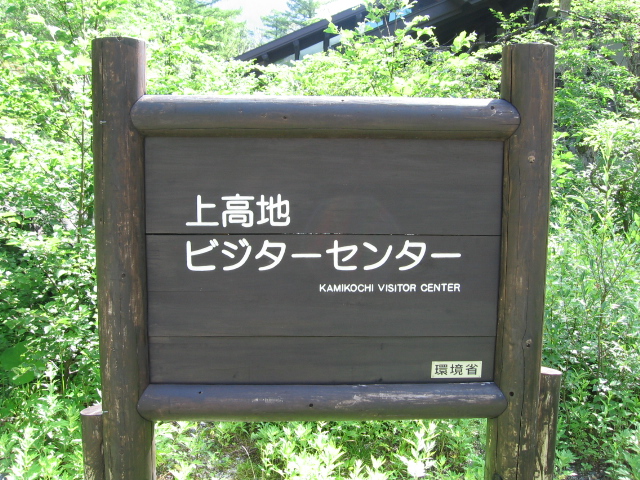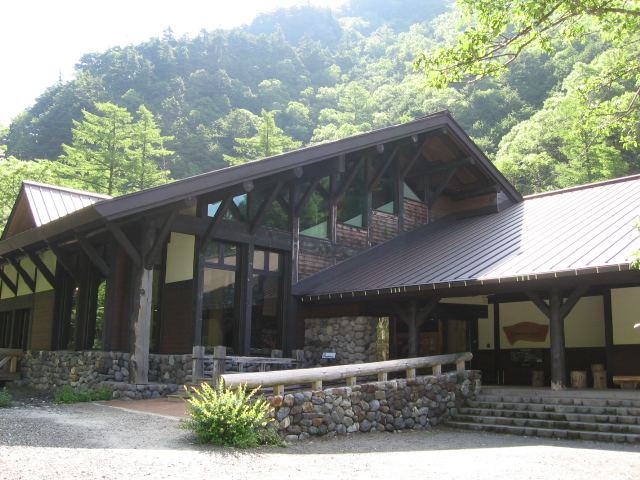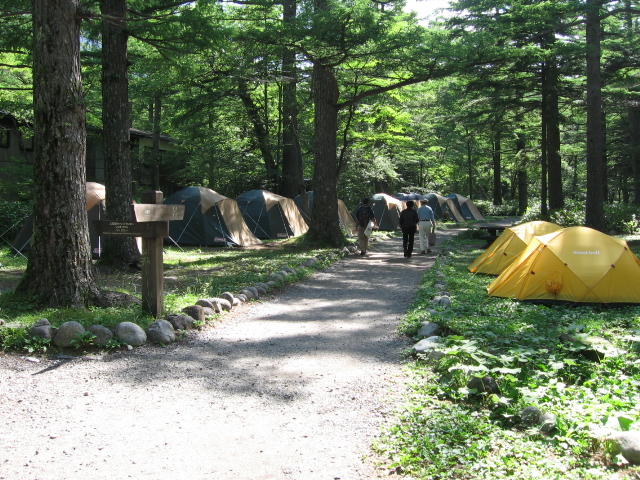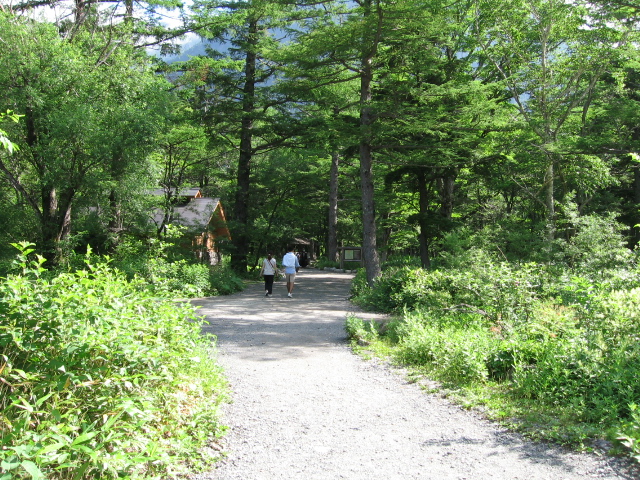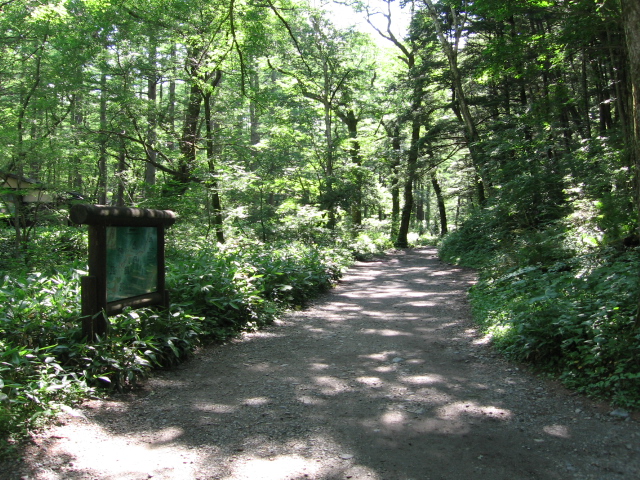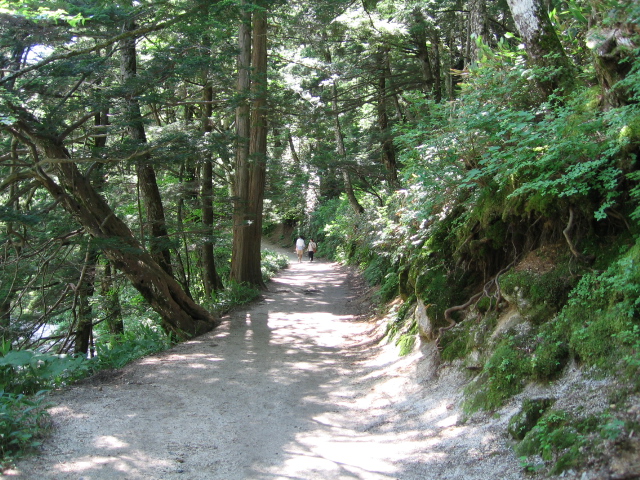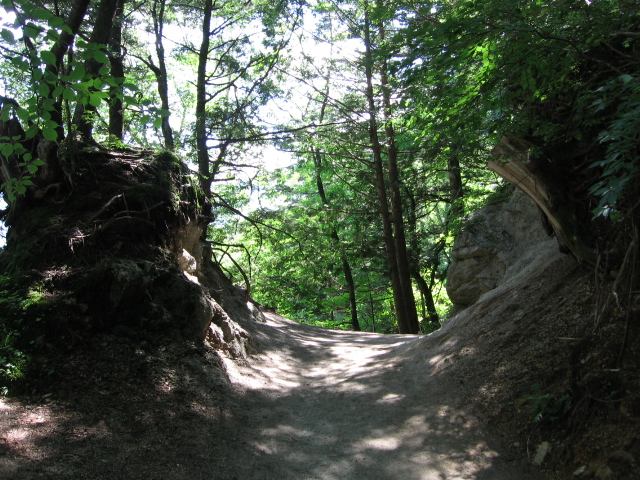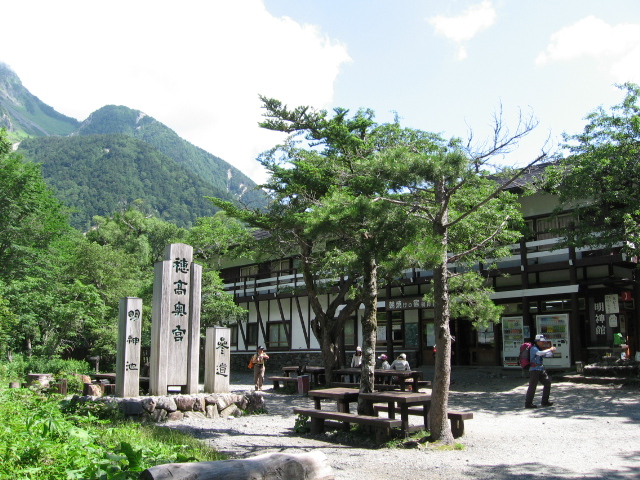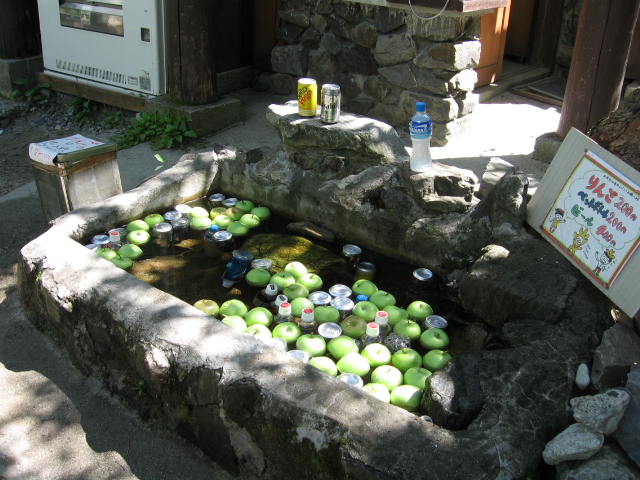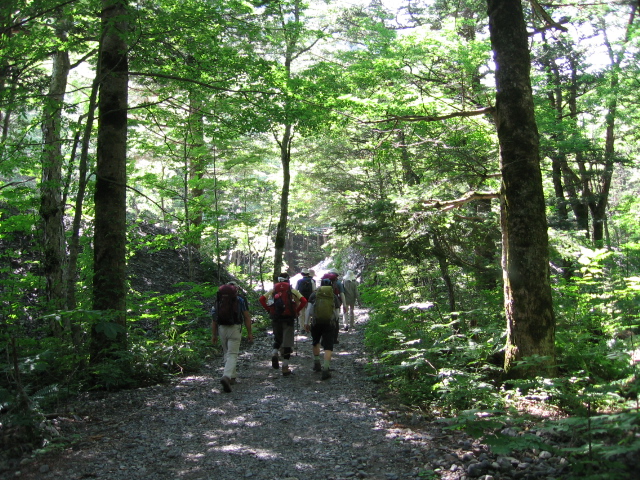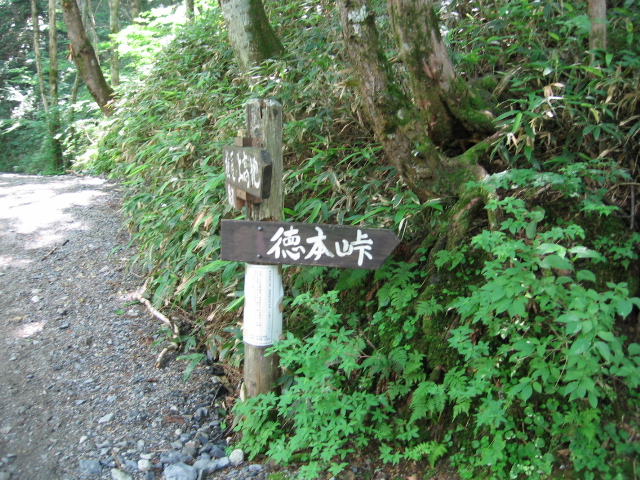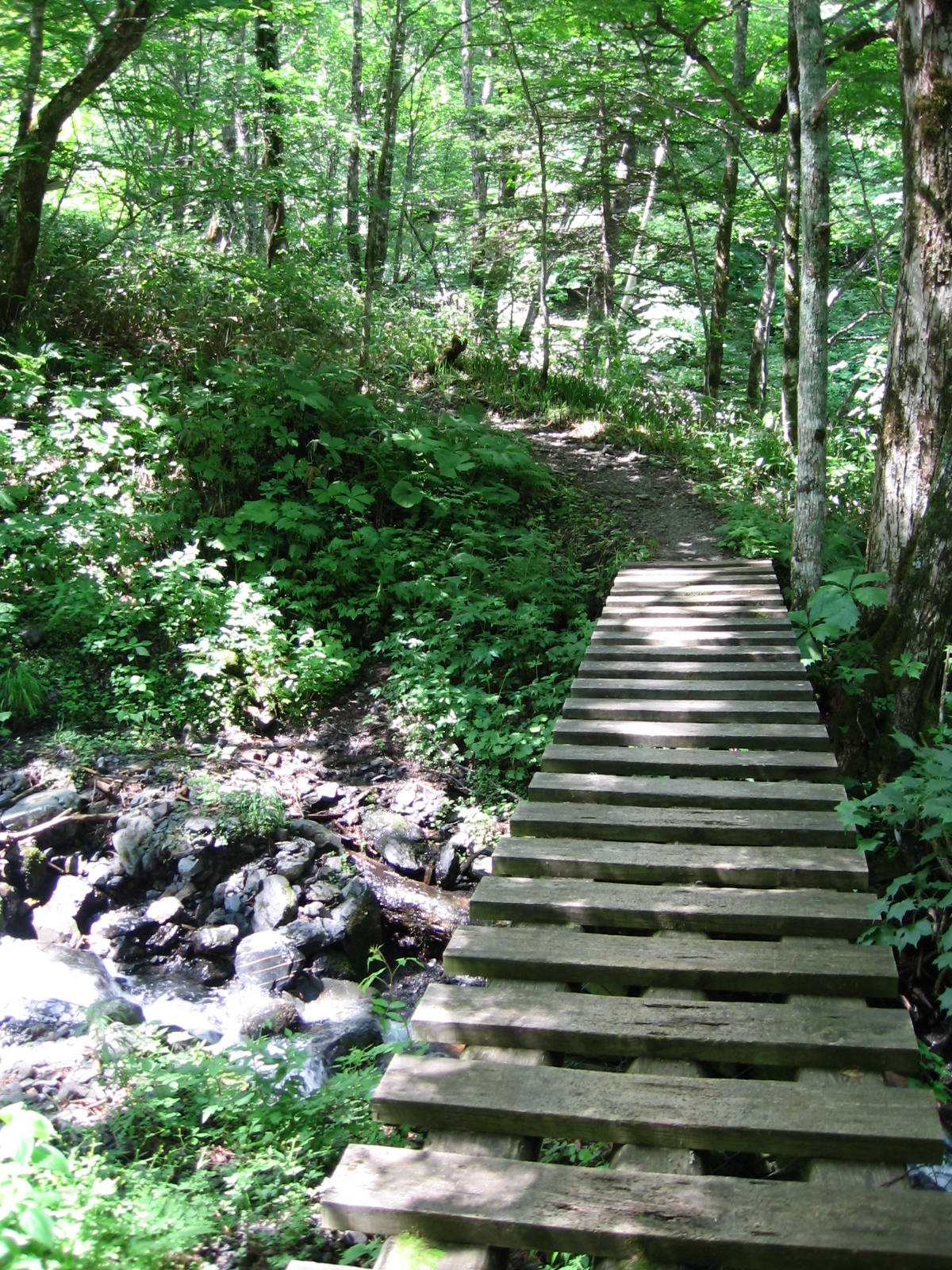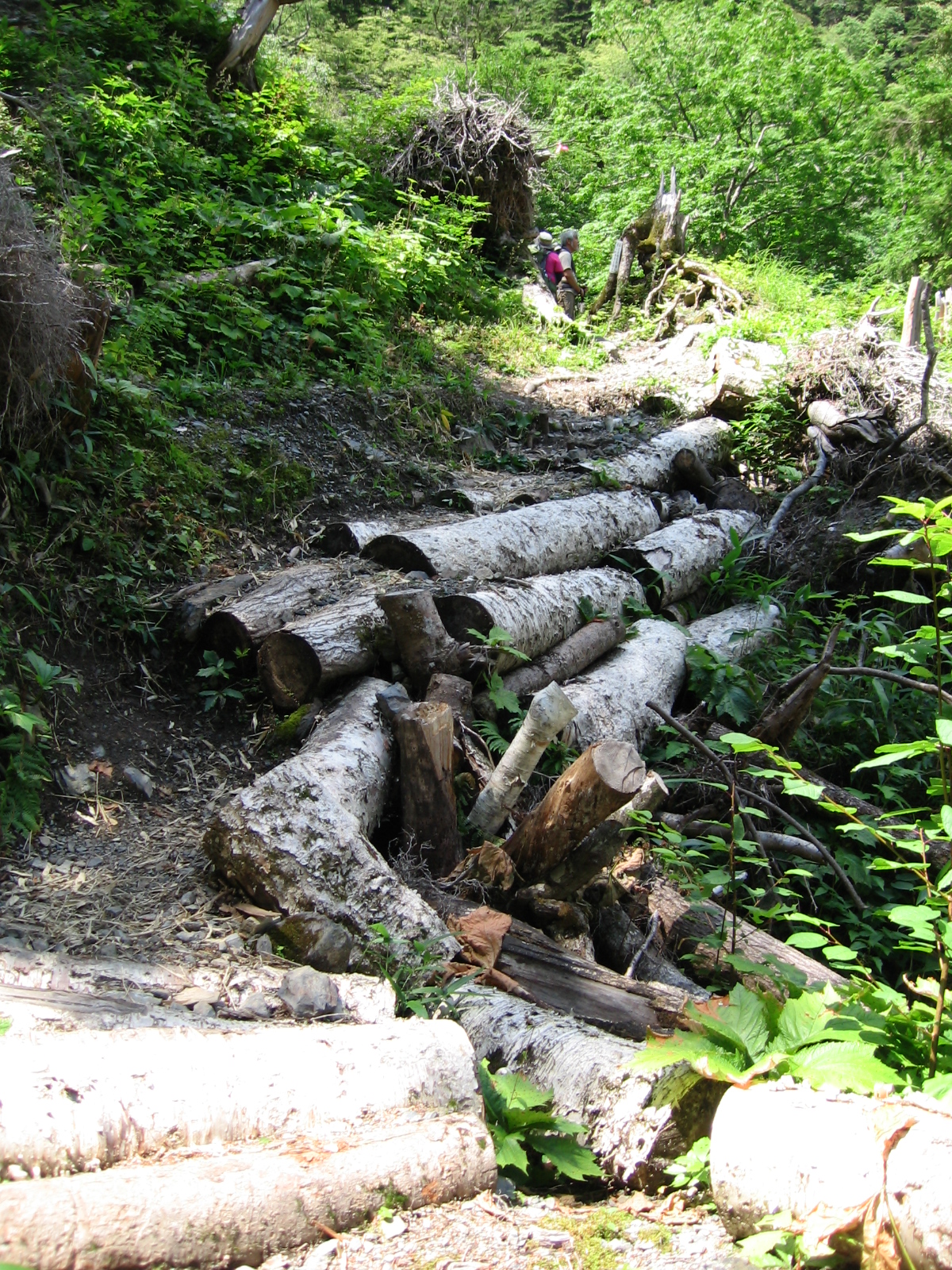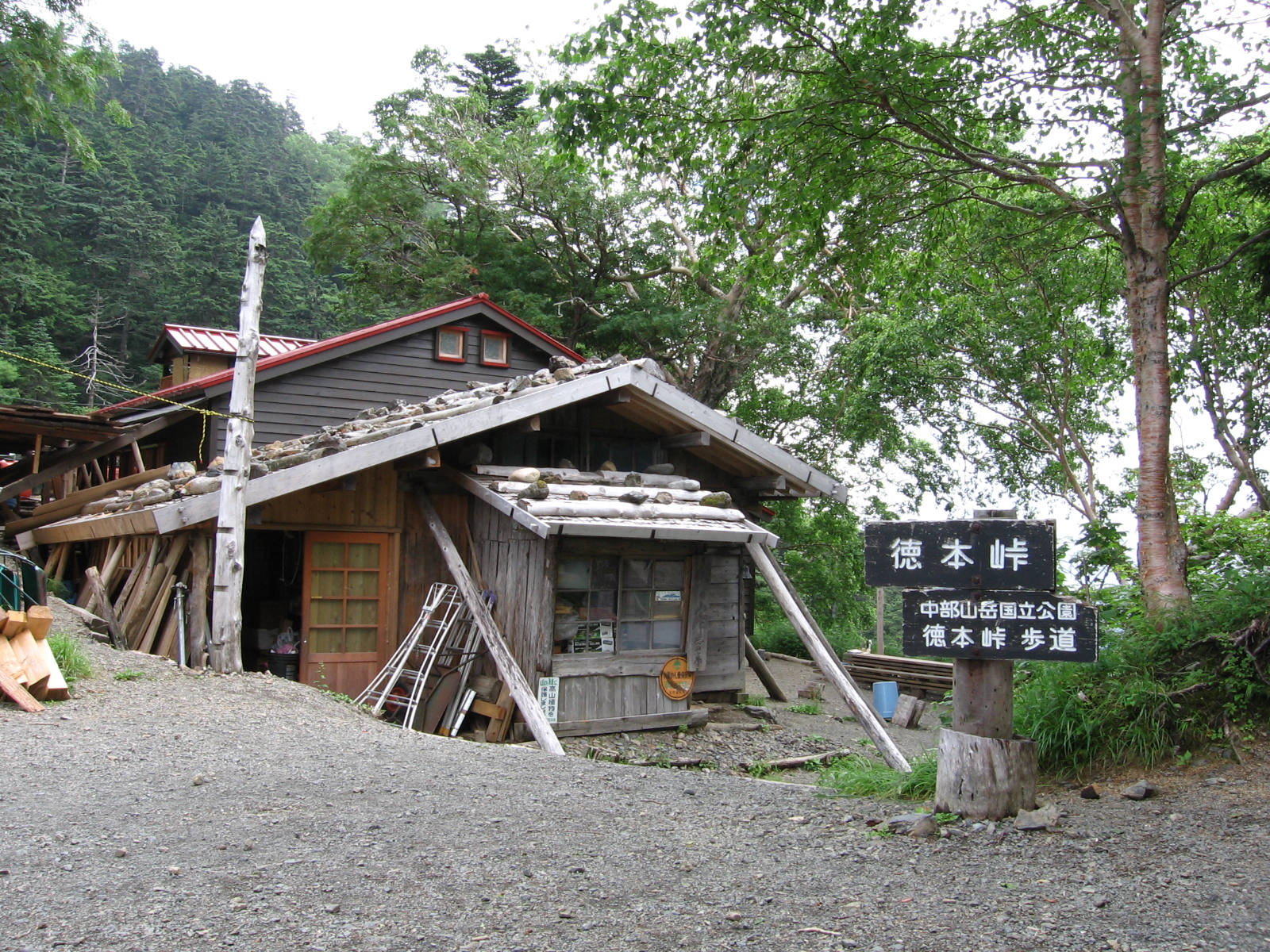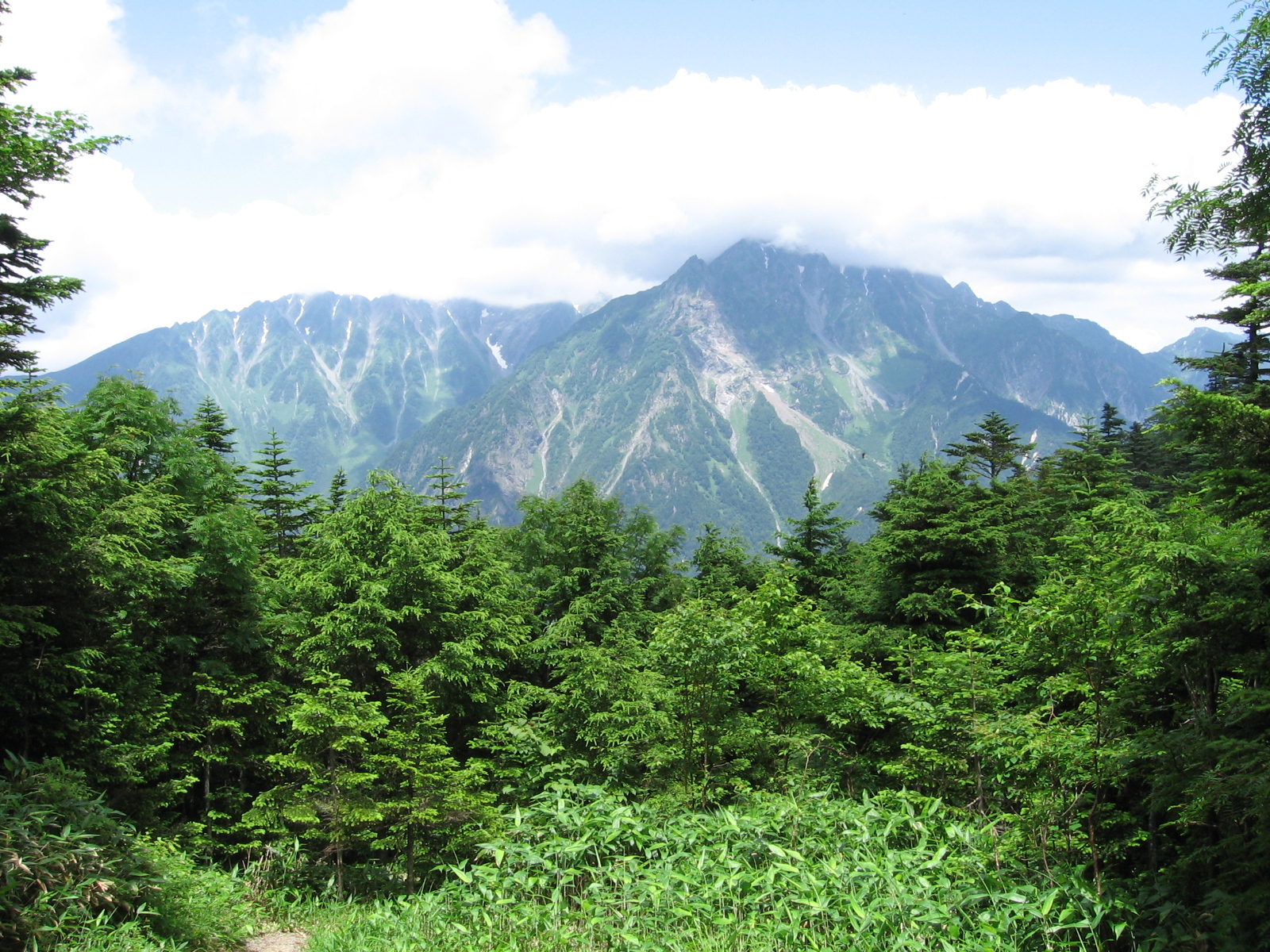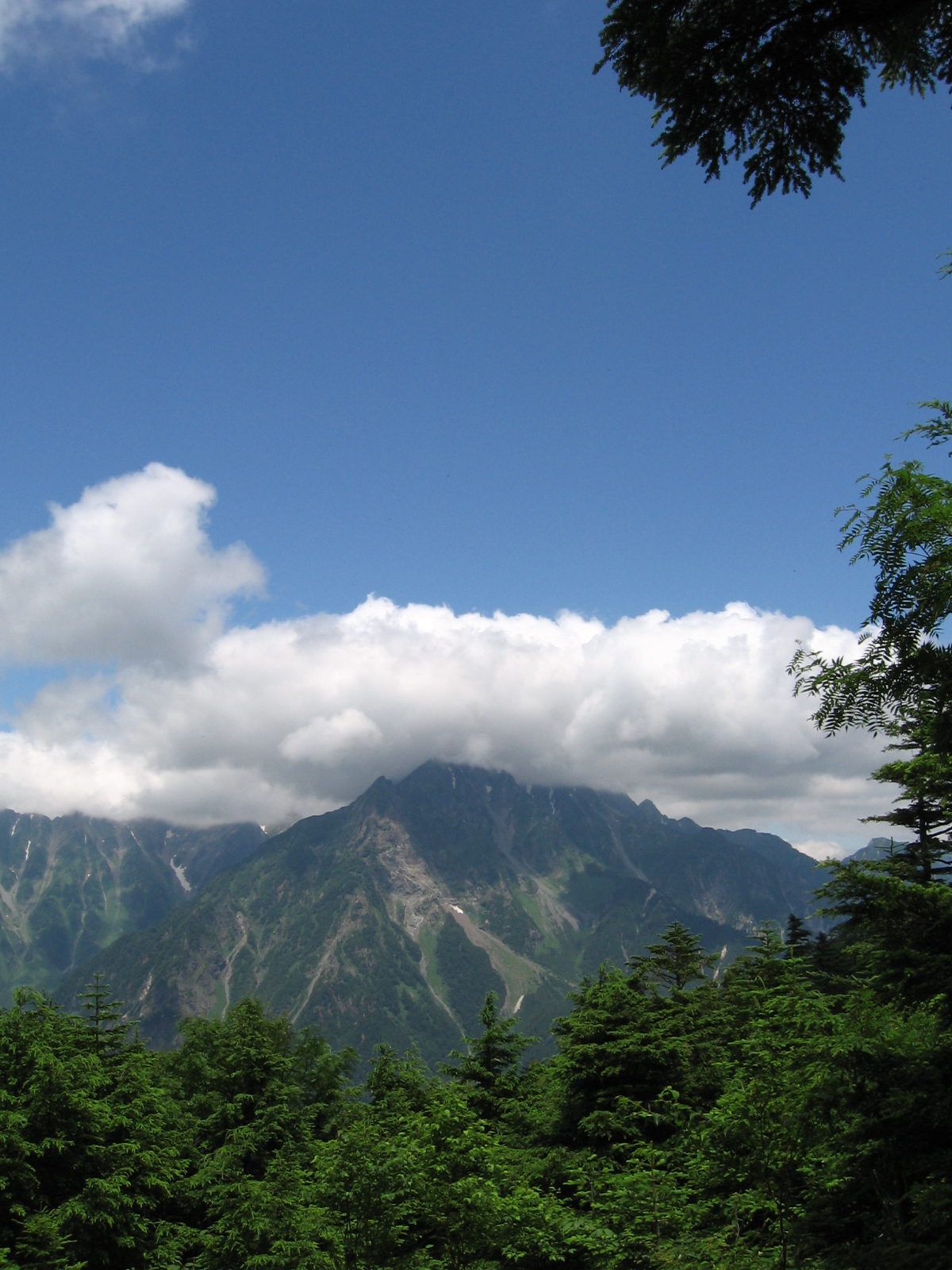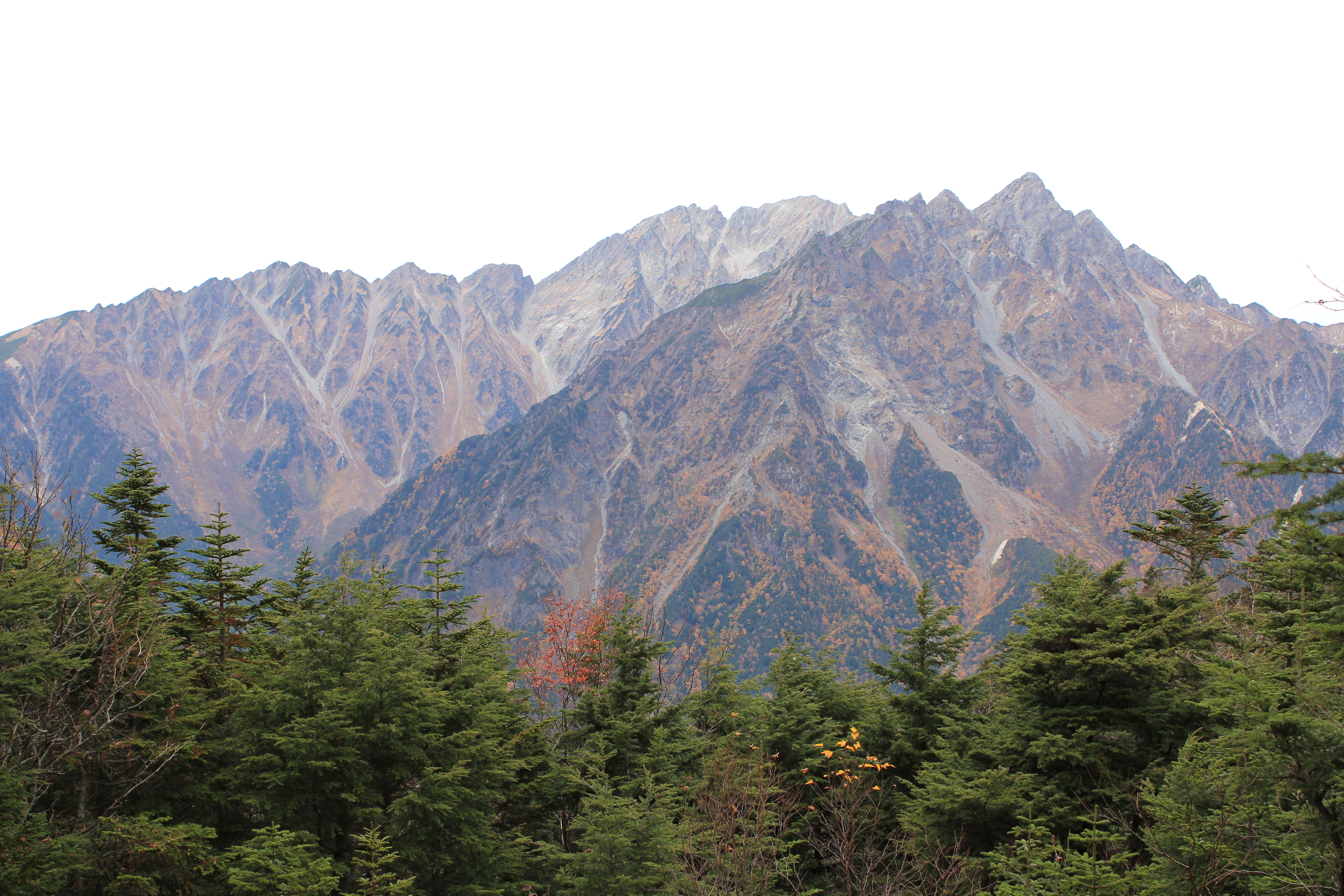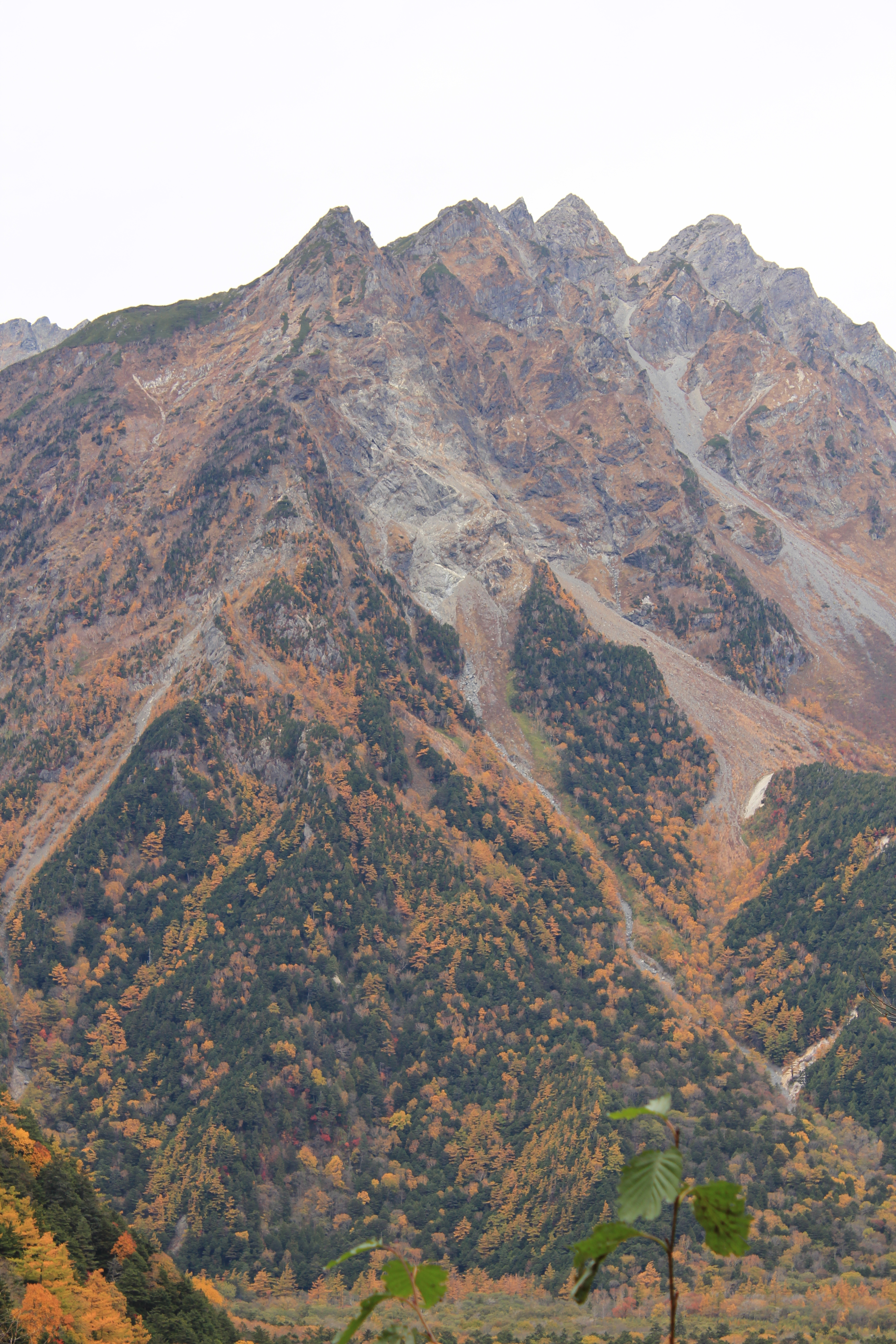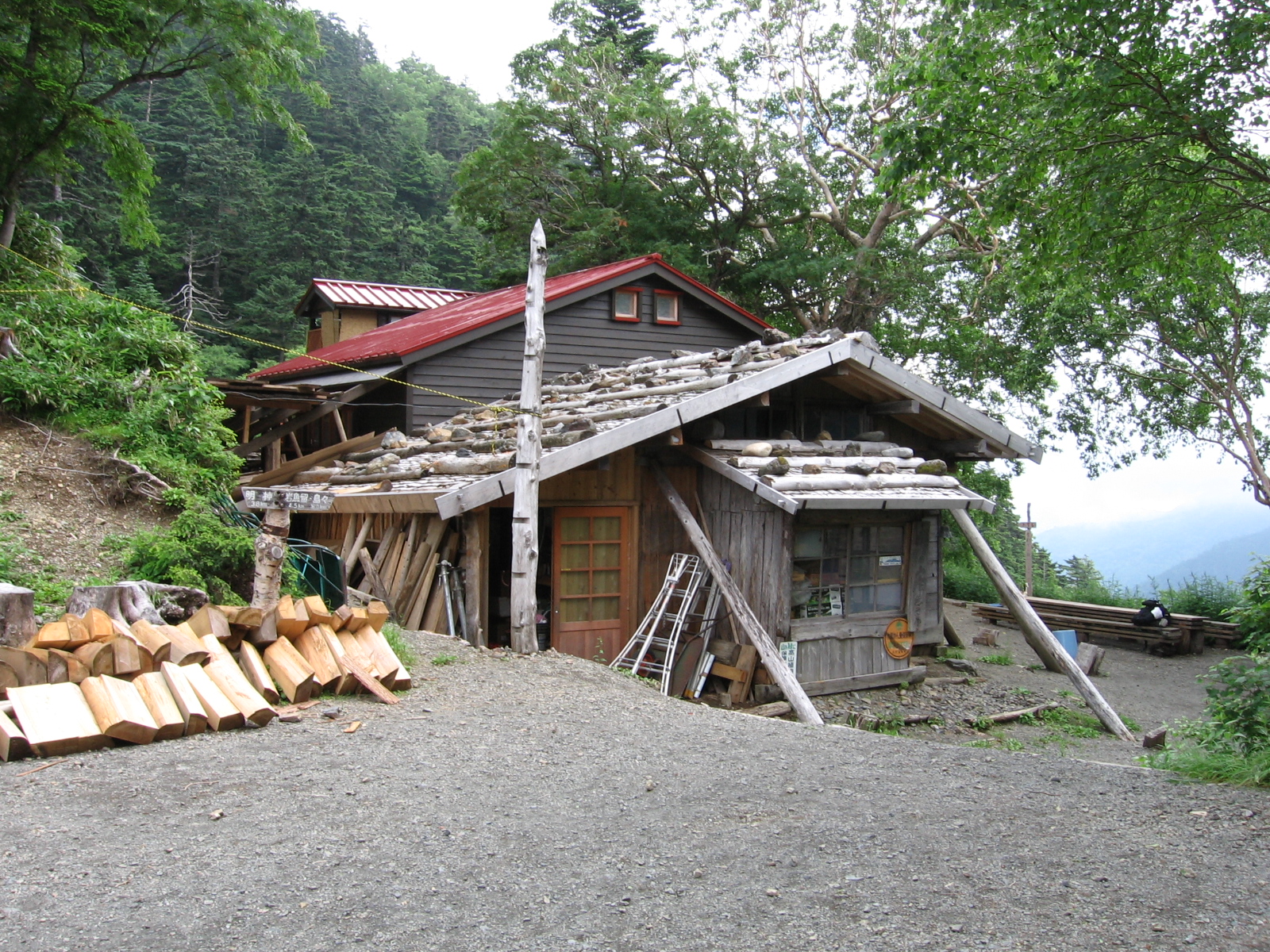
In the past, the times when KamaTunnel was not yet open, the local people from Shin-Shimashima would walk in and out of Kamikōchi to earn their living.
During the Edoperiod (1603-1868), a woodsman who went for logging and in the Meiji period (1868-1912), Hyakujiro Kamijo took local cows up there to graze.
Right now, this mountain trail known as "Tokugo-Toge-Goe" which requires good 9 hours of walking to pass.
Kama Tunnel
Kamikōchi is a basin surrounded by the North Japan Alps, and it is 1,500 meteres above sea level at Kappa Bridge. Every year, many tourists and climbers of the Alps come from all over Japan to visit here. What they all have in common is that they enter through Kamikōchi's gateway, "Kama Tunnel" by bus or taxi. Due to a muddle of information, still no one knows of the exact year of the tunnel's opening.
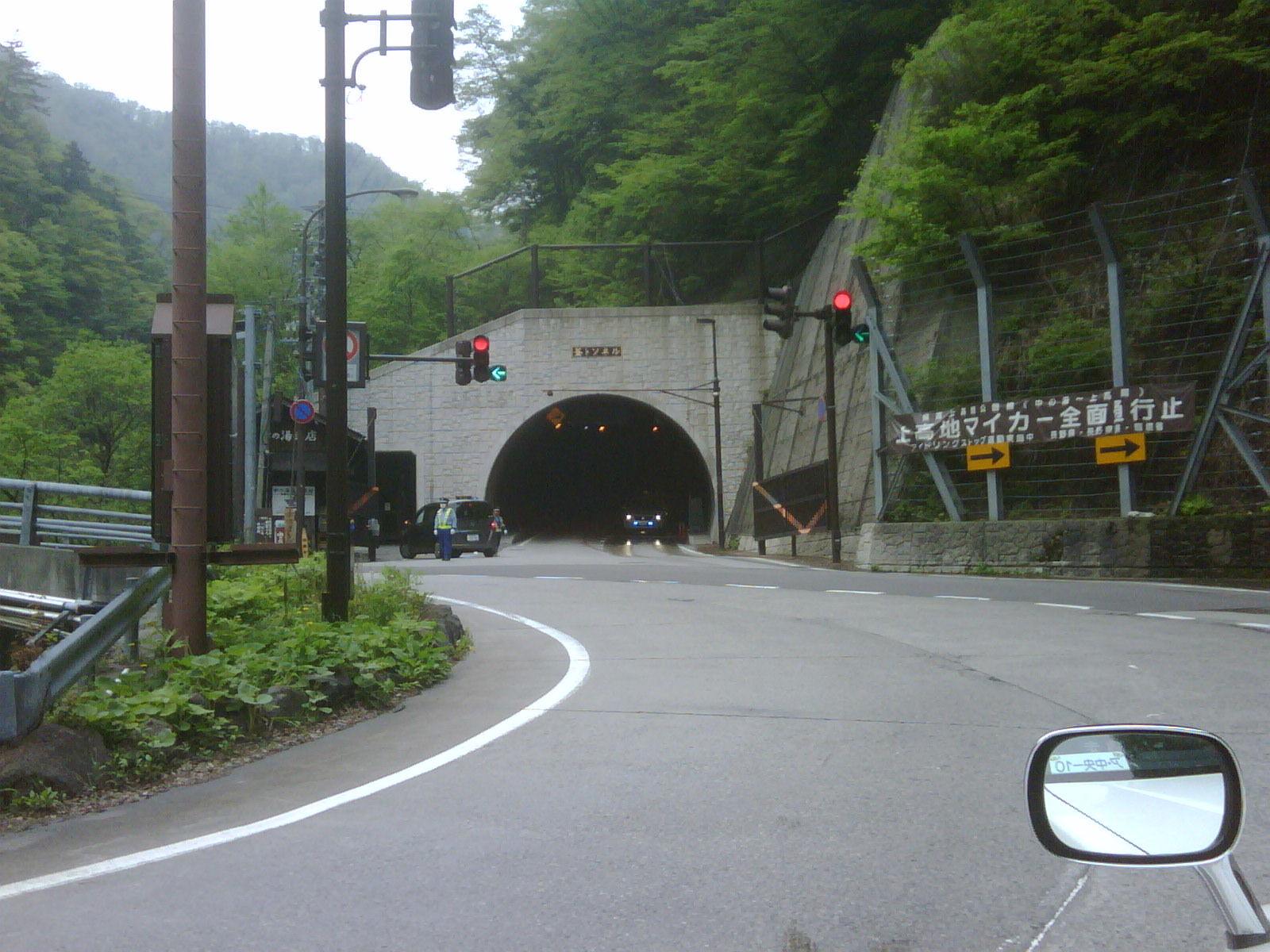
Kama Tunnel
According to one theory, Azusagawa Electric Power company bored the tunnel out for transportion of the construction materials for Kasumizawa Electric Power station to Taisho Pond. Regrettably, Tokyo Electric Power that took over Azusagawa Electric Power disposed of the record of digging the tunnel. As such nobody is able to find out about the exact opening year.
Forgotten Mountain Road
As time progressed, Tokugo-Toge-Goe (mountain trail leading to Kamokchi) lost its need to exist, and then sadly faded from people's memories. In 1927, upon the opening of the road from Sawando to Kamikōchi, the traveling time to reach Kamikōchi from Akamatsu (Shin-Shimashima) was shortened down to only 1 hour. By the time when the motor vehicle became widespread across the country during the high economic growth period (1955-1975), the mountain trail was already a history.
Heritage Mountain Road
Missionary Walter Weston (1861-1940) is known as the father of modern Japanese mountaineering. He walked over Tokugo-Toge-Goe (mountain trail leading to Kamikōchi) many times during his stay in Japan. One morning, on his second attempt to climb Mt. Yariga-take (3,180 m), he described his happiness of walking over the mountain trail in his book "Mountaineering and Exploration inthe Japan Alps" (1896) as follow:
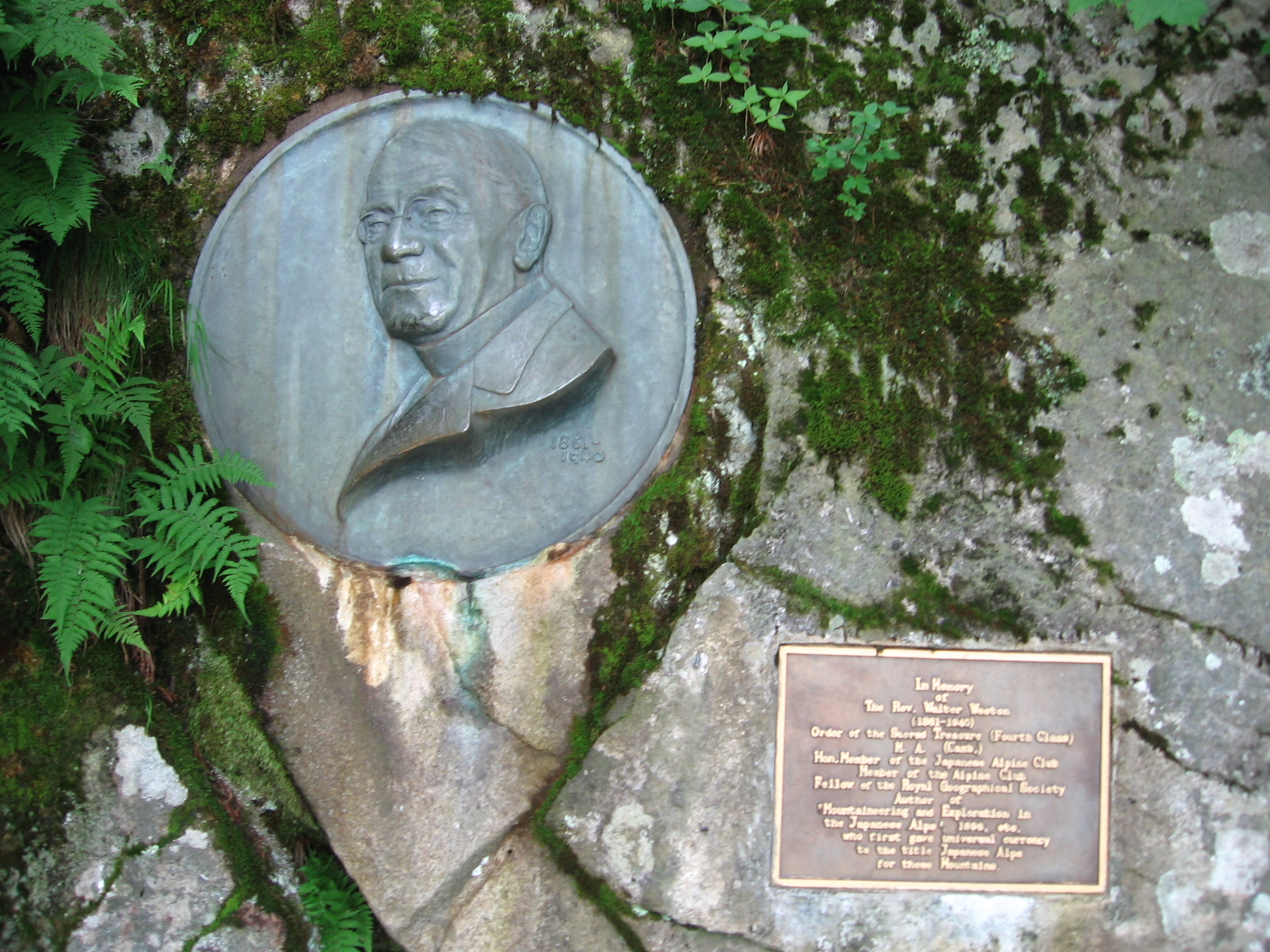
Weston Relief
“The air of the valley was fresh and pure, and the dewdrops trembled like diamonds on every leaf. The sweet scent of the tall straight pines that shaded our road, the murmuring torrent below and the deep blue vault that spread a narrow canopy above the tall sides of the now familiar ravine, made even existence itself a delight. Truly we were in Nature’s Academy, hung with some of the choicest of the Creator’s masterpieces.”
Despite a current boom of mountaineering in Japan, there are only a few passionate mountain climbers aware of existence of the mountain road. Ironically, thanks to that, I believethis mountain road is only isolated mountain road for people who want to enjoy a peaceful and meaningful walk.
One of Best Mountain Views in Japan
A mountain view from the lookout of Tokugo Pass is widely known as one of the best views in Japan. Through the years, many eminent people have praised this mountain view. Unfortunately, since there is not enough space to present all such applause, let's see what Missionary Walter Weston (1861-1940) said about it from his book (Mountaineering and Exploration in the Japan Alps (1896)):
“The view from near the highest point of the pass is one of the grandest in Japan, so entirely does is differ in character from the ordinary mountain landscapes with their rounded outlines and verdure-clad slopes. With the broad white pebbly bed of the Azusagawa sweeping round its southern foot, the tall form of Hodaka-yama (Hodaka mountain range) rises before us face to face. The highest granite peak in Japan, 10,150 feet above the sea, its towers and pinnacles, that spring from ridges seamed with snow, give it its picturesque name, ‘the mountain of the standing ears of corn.'”
As you can see from the above, I can assure you that the heart of Tokugo-Touge-Goe is the mountain view from the lookout of Tokugo Pass. Fortunately, as it takes only 2 hours to walk up there from Kamikōchi. It would make a worthwhile trip to go up there if you have some time.
Step by Step
I hope this illustrated list help you to get to top of Tokugo Pass from Kamikōchi Bus Terminal.
1. | Inside the Kamikōchi Bus Terminal. You can fill your canteen over here. 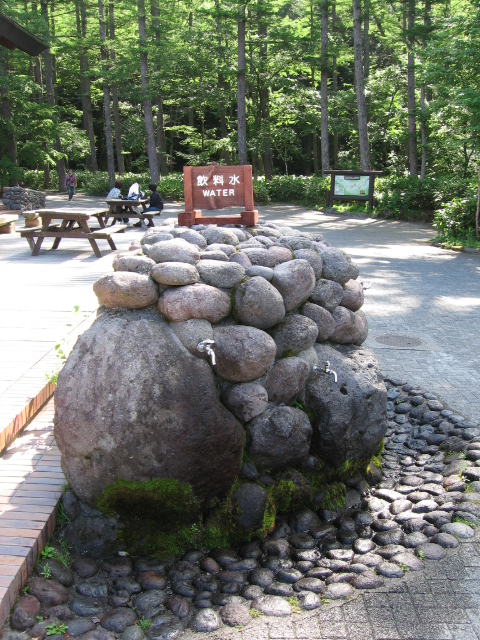 | |
2.
| Walk from the Kamikōchi Bus Terminal to Kappa Bridge (5 min). You can just follow where do most of people go.
| |
3.
| Arrive at the Kappa Bridge. Kappa Bridge is a wooden suspension bridge and known as a symbol of this mountain resort. Summits of Nishihotakadake, Okuhotakadake and Myojindake, towering mountains over 3000 meters above sea level can be overlooked from the bridge. Look toward the downstream, Yakedake with slight smoke coming out from its volcanic activity. Kappa Bridge is one of the most popular scenic area with deep forests of Keshou Yanagi (a kind of willow, Chosenia arbutifolia) and Japanese larch trees. “Kappa” is an imaginary creature originated in Japan. It is said that long ago there was an abyss around this area where Kappa lived. Perhaps another story says that travelers once waded through the river by putting clothing on their head, and they resembled Kappa. However, the true origin of the name of this bridge “Kappa” is still unknown.The water of Azusa River is chilly even in the summer. (from Kamikōchi Official Website)
| |
4.
| Walk from the Kappa Bridge to Kamikōchi Visitor Center (5 min).
| |
5.
| Arrive at the Kamikōchi Visitor Center. The visitor center introduces the geography, geology, fauna, flora and folklore of Kamikōchi and provides information to tourist. Open from 8:00am to 5:00pm (admission free).
| |
6.
| Walk from the Kamikōchi Visitor Center to Myojinkan (45 min). Konashidaira Campsite:
| |
7. | Arrive at the Myojinkan. For Kamikōchi Walk, Hiking, Alps Climbing. Here is nothing but mountains, trees, river and nature. You may look up the Myojin-dake mountain (the old name was the Mt. Hotaka). (from Myojinkan Official Website)
| |
8. | Walk from the Myojinkan to entrance of Tokugo Pass (5 min).
| |
9. | Arrive at the enrance of Tokugo Pass. Turn left at the sign.
| |
10. | Walk from the entrancet of Tokugo Pass to the top (2hrs). You are advised to wear hiking boots and comfortable loose clothing and to bring a change of clothes, a warm fleece and a waterproof jacket.
| |
11. | Arrive at the top (Tokugo Hut). Accommodation Fee:
| |
12. | View of Mt. Myojin-dake from Tokugo Lookout (Summer Time).
| |
13. | View of Mt. Myojin-dake from Tokugo Lookout (Autumn Time).
|
Thank you for reading!
Have a safe journey & a great time!



